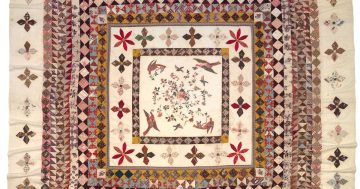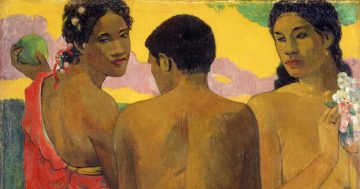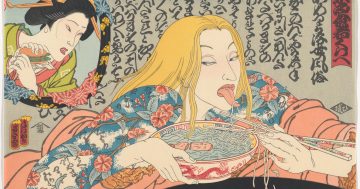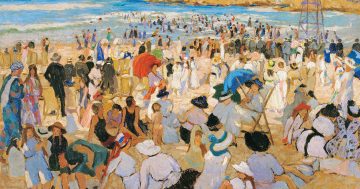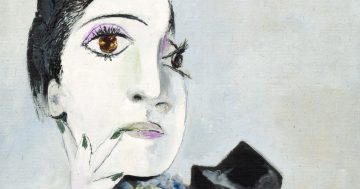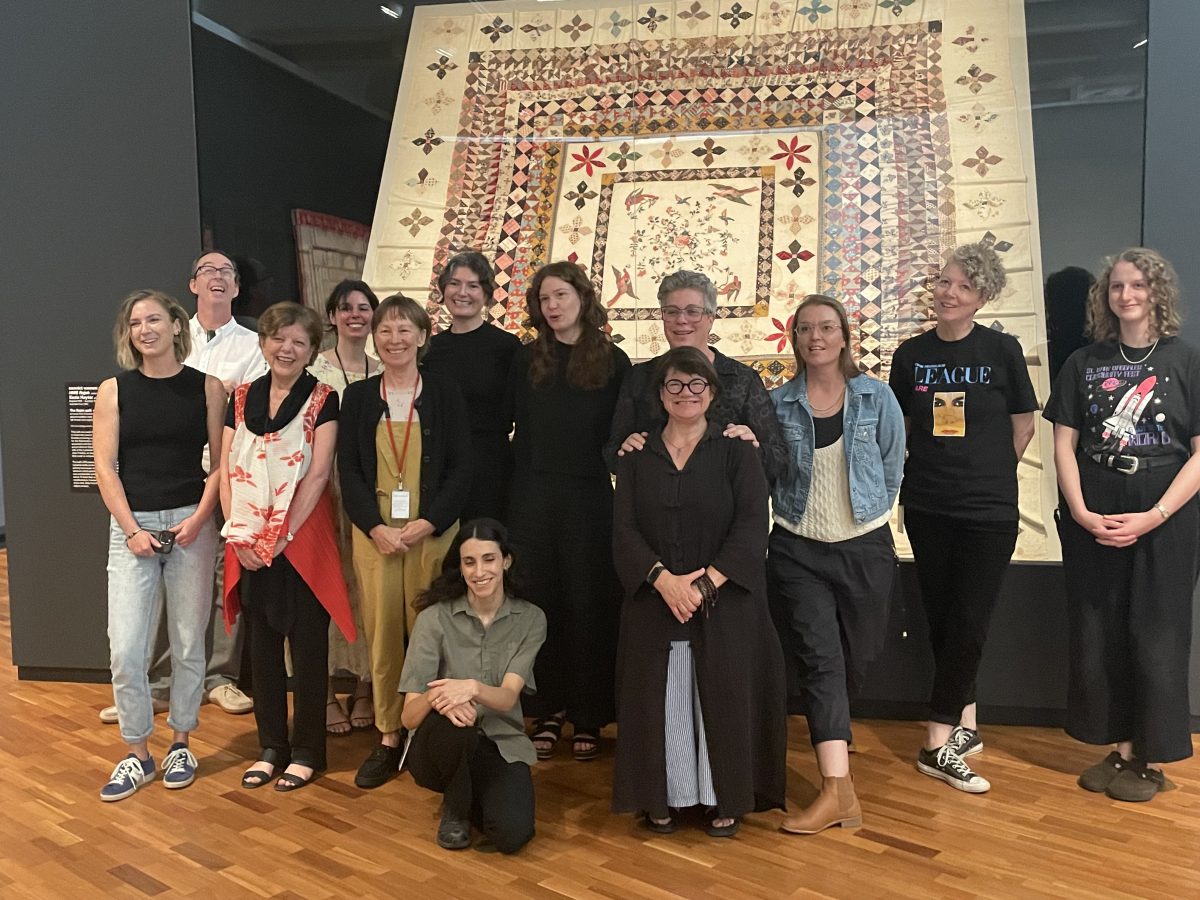
National Gallery of Australia curatorial staff celebrate the installation of the fragile Rajah quilt, centrepiece of its new exhibition A Century of Quilts. Photos: Sally Hopman.
When it’s more than three metres by 3.5 metres, made from the most fragile of material and is almost 200 years old, installing the Rajah quilt into the latest National Gallery of Australia exhibition was never going to be easy.
But curatorial staff at the NGA took it in their creative stride this week, with the 1841 Rajah quilt the centrepiece of its latest exhibition A Century of Quilts.
According to curator of Australian Art at the NGA Simeran Maxwell, the Rajah tells the story of hope and persistence and has been a central subject of study into colonial life since it was rediscovered in 1987.
It was made by unidentified women aboard the HMAS Rajah convict ship in 1841, as they sailed from England to Australia. It was sent back to Britain as a gift for Elizabeth Fry who led the British Ladies Society – and was left forgotten in an attic in Scotland until rediscovered about 35 years ago.
The fact it was stored away for so many years and then kept in a temperature-controlled environment when given to the NGA in 1989 by Les Hollings and the Australian Textiles Fund, has allowed it to remain in remarkable condition, Ms Maxwell said.
Because of its size and fragility, the last time the Rajah was exhibited was 2016 at the National Gallery in Victoria. It has mostly been stored away since.
“There is the odd spot of blood on it from pricked sewing fingers and there’s a brown stain on the dedication section – it’s not a coffee stain, but probably just finger oil. But for me, the marks just add to the story,” Ms Maxwell said.
She said the quilt had long been the most popular artwork requested by visitors to the NGA, but went on exhibition rarely for logistical and conservation reasons.
“It takes a lot of time and effort to get it out,” she said. “From the way we display it to the amount of light we can have on it for a particular time – it all has to be taken into account. Everything about it has to be custom-made because of its size and because of the way we have to hang it.”
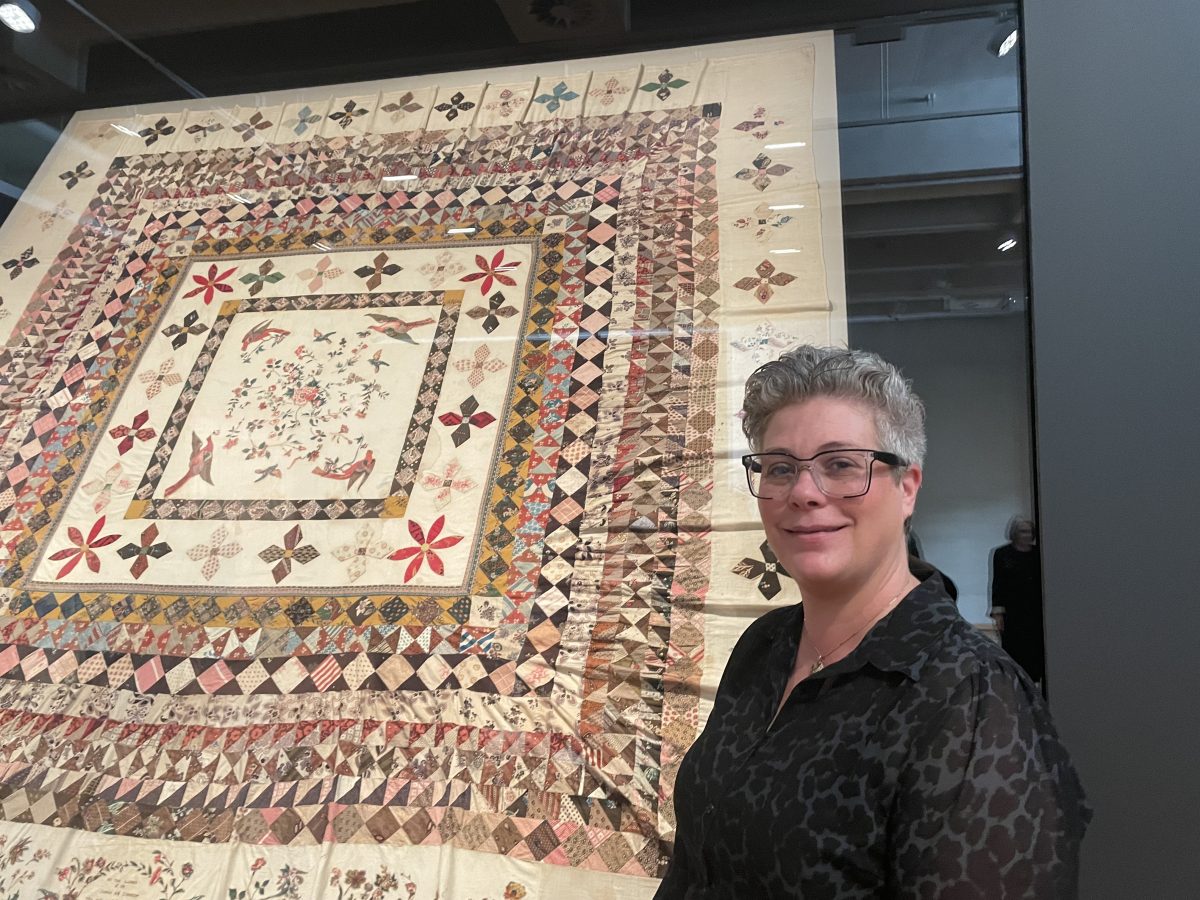
The Curator of Australian Art at the NGA, Simeran Maxwell, in front of the Rajah quilt.
Although there’s little provenance on who the needlewomen were, the quilt showed that their skill range was varied. Some were excellent, judging by the finished work, others less so. Ms Maxwell said they knew many of the women could sew because they would have had to make their own clothes.
But as a whole, it tells a remarkable story of convict women, who regardless of their backgrounds, banded together on board the ship, travelling to a land across the sea, that none of them knew how it would end.
In the dedication sewn into the quilt, the women thank the ladies of the Convict Ship Committee “for their welfare” and as proof the women “have been industrious” throughout the voyage.
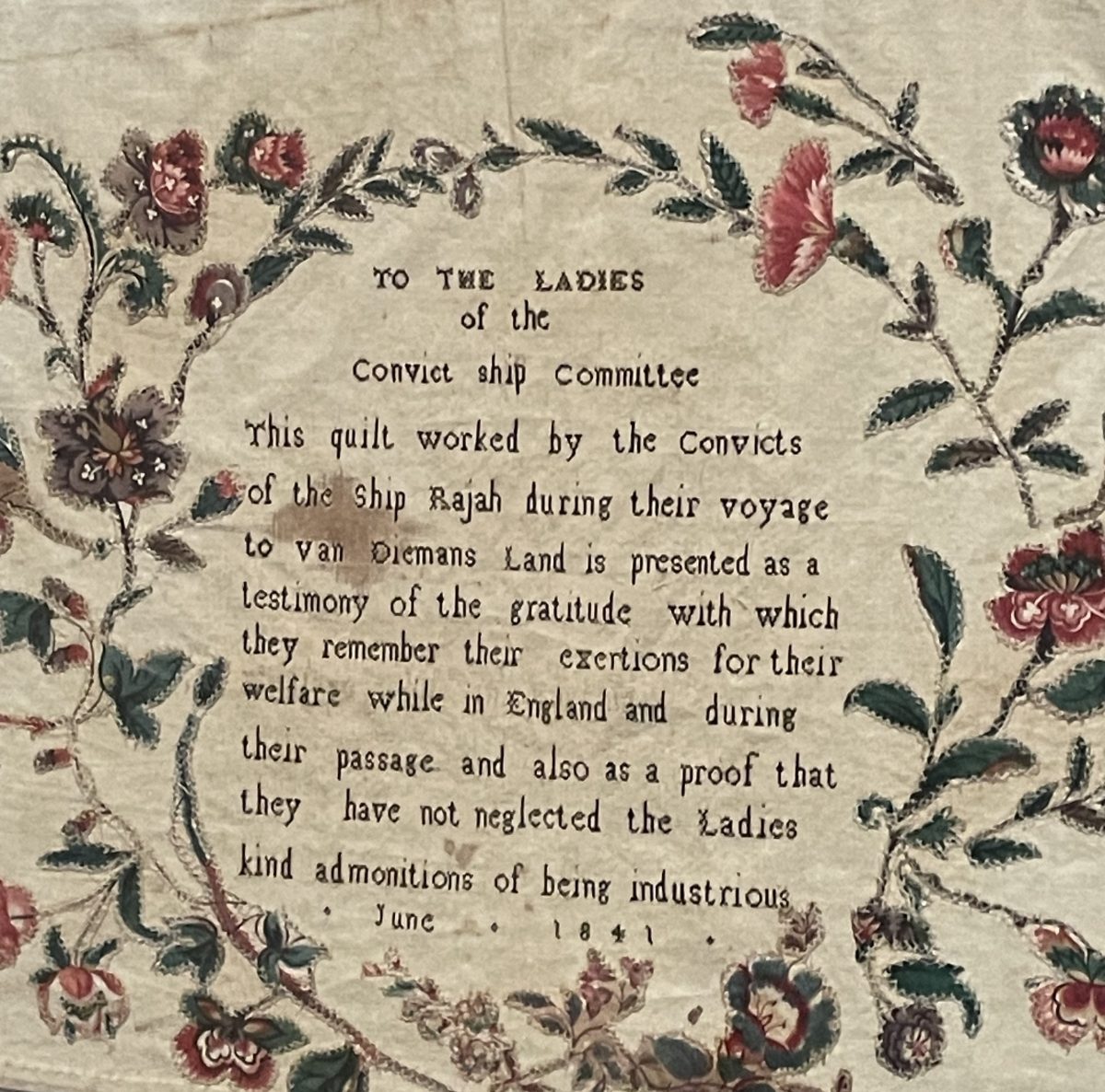
A dedication to the committee who looked after the welfare of convict women aboard the Rajah in 1841 – the brown stain is believed to be oil from a seamstress’s finger.
The Rajah is on show with 17 other quilts, all from the NGA collection, ranging from the 1903 Westbury quilt, featuring 52 individual blocks embroidered by the women of the Hampson family, under matriarch Mary Ann Hampson. It reflects the lives and interests of the women and pays tribute to their monarch, Queen Victoria.
With one of the richest collections of colonial quilts in Australia, the NGA exhibition also showcases the possum-skin cloak designs of First Nations women as well as traditional works from remote and regional Australia.
A Century of Quilts is part of the NGA’s initiative to celebrate the work of women artists. A Century of Quilts opened at the National Gallery of Australia, Canberra, on 16 March and runs until 25 August 2024. Entry is free but tickets are required.
Original Article published by Sally Hopman on Riotact.


